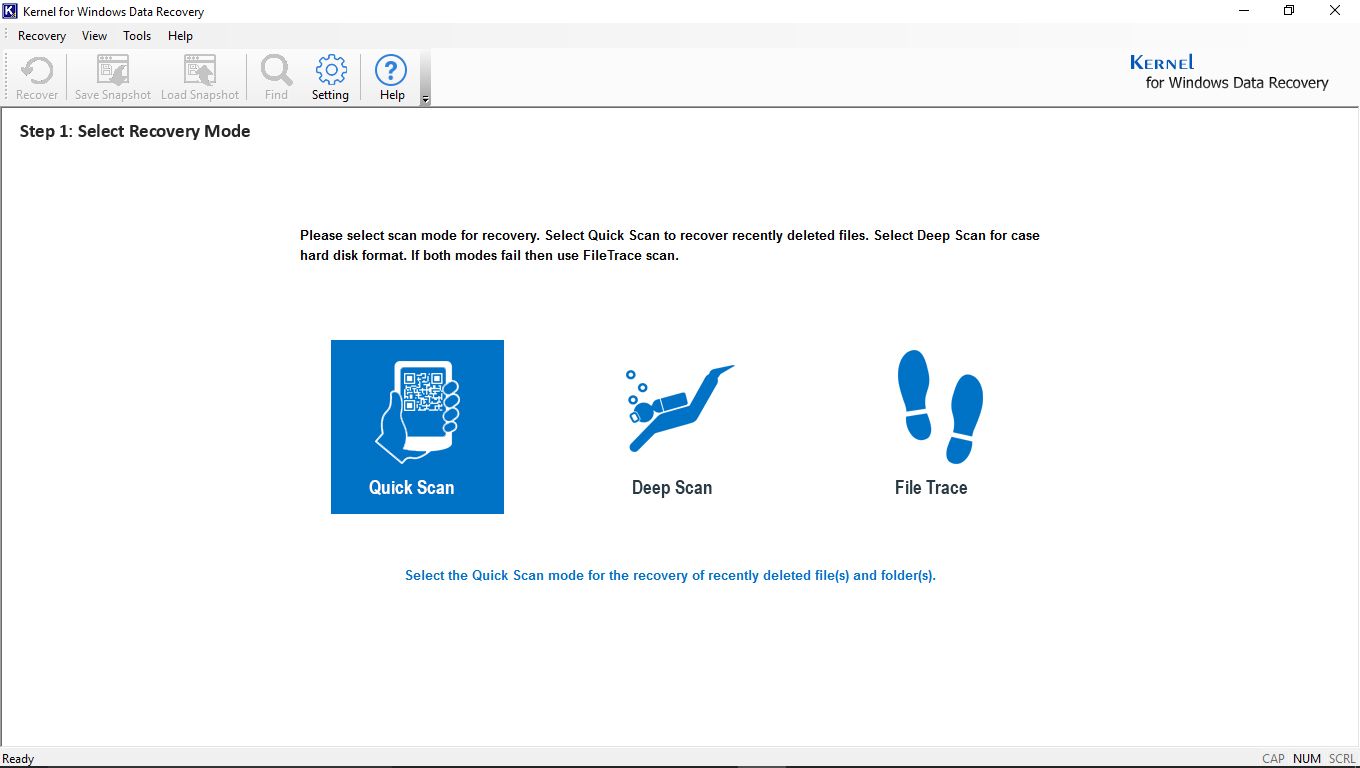“A few days ago, I experienced an abrupt shutdown with an error message and code- Your Pc Ran into A Problem and Needs to Restart. We’ll restart for you. After this incident, my PC refuses to boot properly and is stuck in a boot loop. I have turned it off and let it set for a whole day, but the problem remains the same. In the boot menu, I already tried to change a couple of options, but nothing works. How can I get my PC to work? I would love to get this fixed, so please help me out.”
The blue screen of death or BSOD is the most feared issue that can cause some serious trouble to the user. In many cases, it is followed by a boot loop- this perpetual process can cause gnashing and frustration to the user. Along with the error message, a specific step code is also displayed (next to the QR code icon). If you are unsure about the error code, then one can try googling for the displayed error. Scanning the QR code can also do the trick. In this post we are going to discuss ways to recover deleted data from windows 10.
Causes Behind BSOD
It is somehow tricky to pinpoint the issue that causes BSOD. But, as mentioned earlier, searching for the stop code can help you formulate the right strategy for the specific problem at hand. Some of the most common causes are given below:
- Malicious attacks.
- Overheating of the system, thereby causing the improper system shutdown.
- Accidental deletion of a registry file from system32 folder.
- Unexpected system shutdown.
- Overclocking RAM causing OS to crash.
BSOD can cause data loss; hence, it is recommended to backup your data on a regular basis. Next, we will discuss two cases based on which fixes will be suggested.
Case 1: Booting in Safe Mode is Possible
If you are able to boot into Safe Mode, then it opens many avenues to fix your PC against the stop codes. Following are some of the fixes that one can try to get past the stop codes:
Method #1 Update the Drivers
Driver issues can also cause “Your PC ran into a problem and needs to restart” error. One can update the expired drivers to fix the issue.
Method #2 Uninstall Recently Installed Applications
High memory/ RAM usage can be attributed to a memory-intensive program or a faulty program design. Uninstalling any unnecessary memory-intensive programs might fix the issue. In Windows 10, go to the Programs and Features in the Start menu to uninstall any memory-intensive program.
Note: While in the Safe mode uninstalling an application isn’t a straightforward task. Following steps can help you uninstall any program in Safe Mode:
- Hold
 +X keys and select Command Prompt (admin) option.
+X keys and select Command Prompt (admin) option. - Type the following in the text box:
- Next, enter the net start msiserver in the command prompt.
- Now, try uninstalling the program again.
REG ADD “HKLM\SYSTEM\CurrentControlSet\Control\SafeBoot\Minimal\MSIServer” /VE /T REG_SZ /F /D “Service”
Press enter afterward.
Method #3 Modify the Memory Dump Setting
Follow the steps outlined below to modify the memory dump setting:
- Assuming you are in Safe Mode, click on This PC icon and select Properties.
- Click on the Advanced system settings tab and further select the Advanced tab.
- Under the Startup and Recovery section, click on the Settings button.
- In the Startup and Recovery tab, go to the System failure section > under Write debugging information > select Complete memory dump form the drop-down menu.
- Click OK and restart.
Method #4 Run System File Checker
To run system file checker (SFC) in safe mode, please follow the steps outlined below:
- Hold
 +X keys and select Command Prompt (admin) option.
+X keys and select Command Prompt (admin) option. - In the command prompt type sfc /scannow and hit enter.
- After the SFC is done the checking, reboot the system to see if the problem is resolved.
Method #5 Update Windows
Updating Windows might solve the BSOD issue. Depending upon your Windows version, one can update the Windows.
For Windows 10:
- In the Start menu’s search box type Update and select Check for updates.
- Under the Update status, click on Check for updates button.
- Install al the updates and restart your PC.
For Windows 8/7:
- In the search box type, Windows Update and click Check for updates button.
- After installing the updates, restart your PC.
Case 2: PC is Unable to Boot in Safe Mode
If you are unable to boot in Safe mode, then try the methods given below:
Method #1 Run Startup repair
- Use Windows installation disk or a bootable drive to boot your PC.
- When you are prompted to install Windows, click Repair your computer. Next, choose Troubleshoot > Advanced Options > Startup Repair.
Method #2 System Restore
This option is available for those users only who have previously created a system restore point. If yes, then follow the steps outlined below:
- In the Windows boot menu, select Troubleshoot > Advanced Options > System Restore.
- Form the options choose a previous working state to restore your computer.
- Wait for the process to end and restart your PC.
Method #3 System Image Recovery
If you have created a system image recovery previously, then it is possible to recover your data.
- Connect the external drive containing the system file image to your system.
- From the Windows boot options menu, select Troubleshoot > Advanced Options > System Image Recovery.
- From the options, select the system image that you want to recover from.
- Follow the instructions to restore the system.
- Restart the system.
Windows Data Recovery
If you have already tried all the previously suggested methods and fixes, then it appears that you require a professional Data Recovery tool. One such tool is Windows Data Recovery software. It is one of a kind data recovery tools as it can quickly recover lost and inaccessible files. It is also possible to recover data from flash drive. The extraordinary features of the tool allow to manage recovery as per your needs. One can scan severely corrupted sectors multiple times. Another essential feature is the Pause/Resume Recovery; it allows the user to pause the recovery process to generate a snapshot. Later this snapshot can be loaded into the tool to resume the recovery process from the point where you left it.

Conclusion
We have extensively discussed two scenarios applicable to the issue Your Pc Ran into A Problem and Needs to Restart. If you have tried the suggested fixes to no avail, then it implies that the storage has gone corrupt. In situations like this, we highly recommend Windows Data Recovery as it can fix windows 10 corruption issues efficiently

